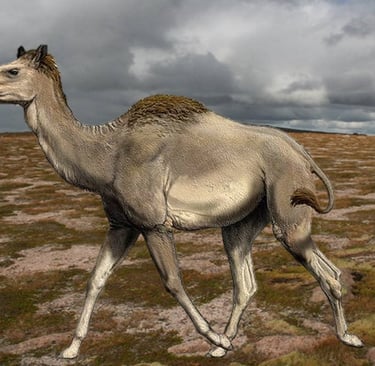The Titanotylopus: Exploring One of North America's Last Camels


Introduction to Titanotylopus
The titanotylopus, a fascinating extinct genus of camel, was endemic to North America during the Late Hemphillian stage of the Miocene through to the Irvington stage of the Pleistocene. These magnificent creatures were among the last surviving representatives of North American camels, and their remarkable features have intrigued paleontologists and enthusiasts alike.
Physical Characteristics and Size
One of the most striking aspects of the titanotylopus is its enormous size. Standing at an impressive shoulder height of around 3.5 meters and weighing approximately 2,500 kilograms, this extinct camel was a giant in its habitat. Its impressive stature would have made it a formidable herbivore, capable of traversing the diverse landscapes that once characterized North America. The physical attributes of the titanotylopus highlight its adaptability to various environmental conditions, allowing it to thrive in an array of ecosystems.
Habitat and Ecological Role
During the Miocene and Pleistocene epochs, North America was home to many changing ecological zones, including grasslands, shrubs, and woodlands. The titanotylopus played a crucial role in this complex ecosystem as a large herbivore, contributing to the maintenance of plant communities through its grazing habits. Its sizeable presence likely influenced the structure of plant life and the availability of resources within its habitat. Understanding the ecological role of the titanotylopus gives us insight into the dynamics of prehistoric environments and the interdependence of species.
Conclusion: The Legacy of Titanotylopus
The titanotylopus represents a unique chapter in the evolutionary history of camels and showcases the diversity of life that once roamed North America. As one of the last of its kind, its existence offers valuable information about the climatic and ecological shifts that occured during its time. Fossils and evidence of titanotylopus continue to be crucial for researchers, providing a window into the past and enriching our understanding of extinct species. The study of such magnificent creatures amplifies our appreciation for biodiversity and the adaptive strategies employed by species throughout the ages.
